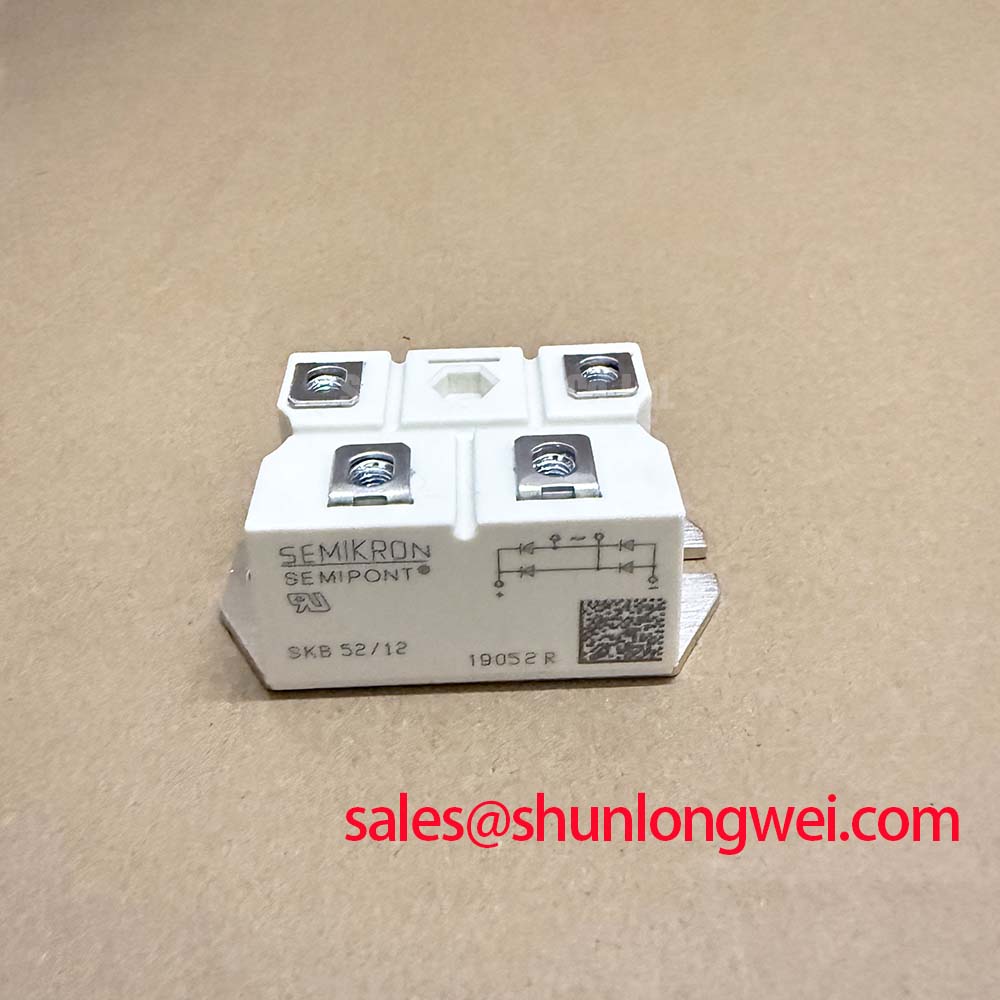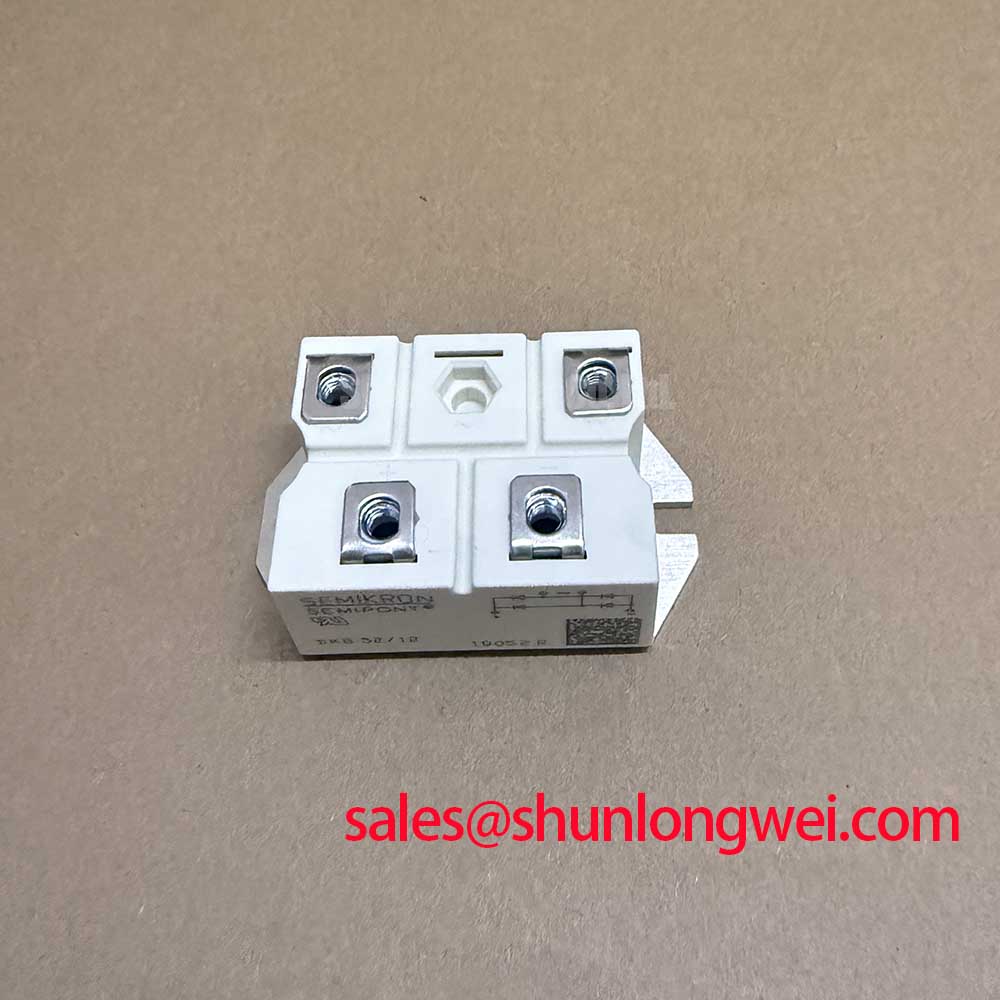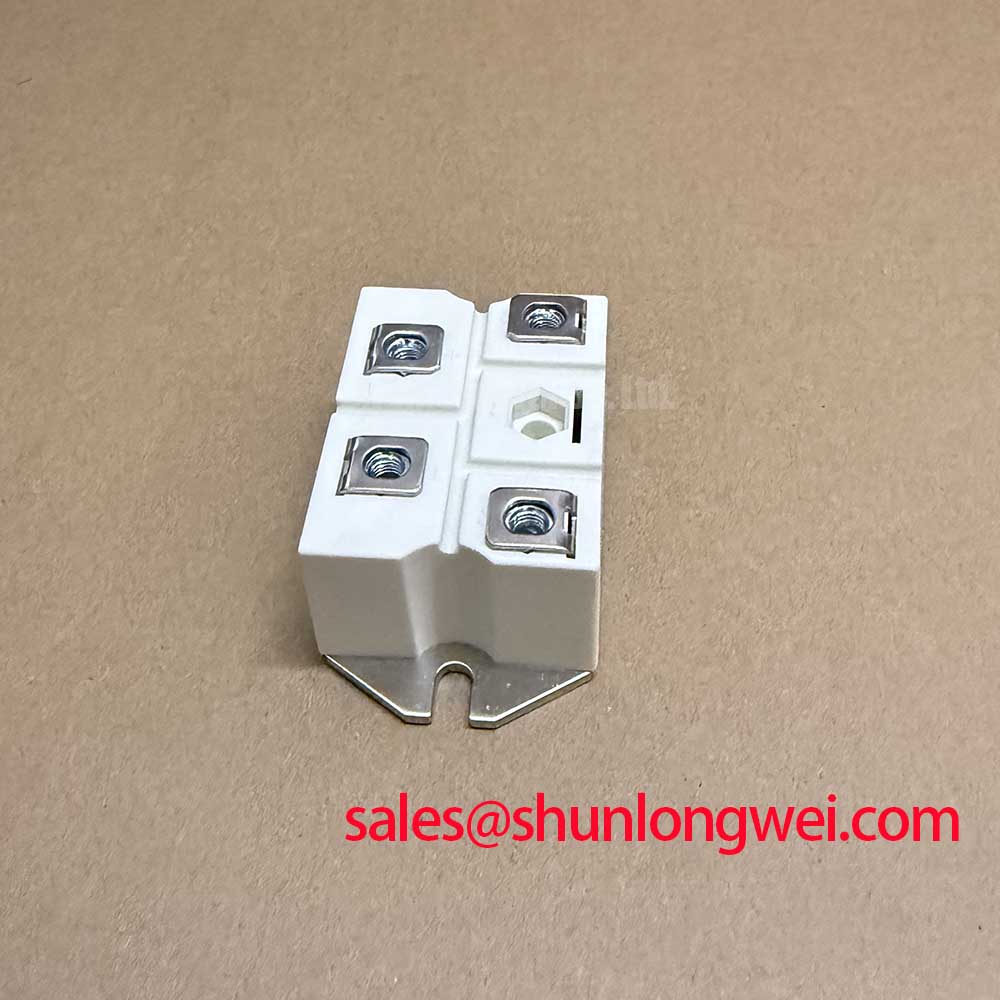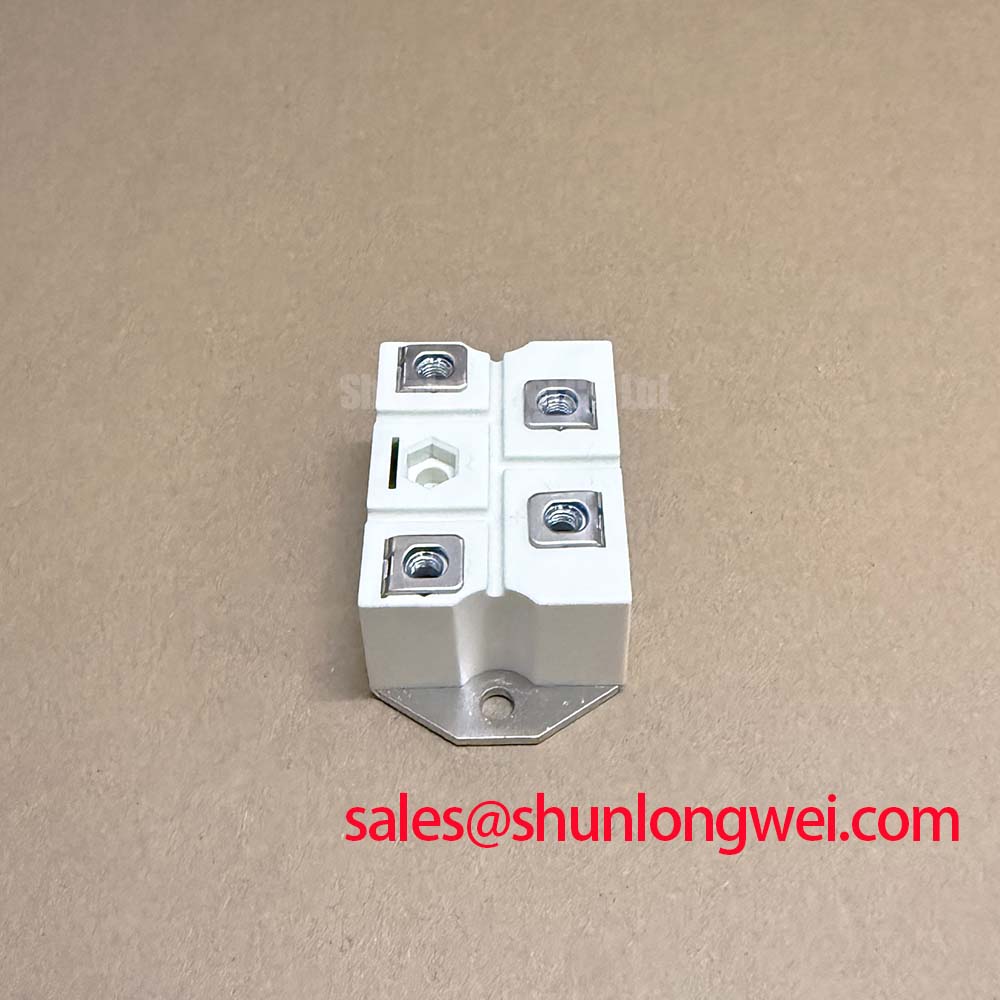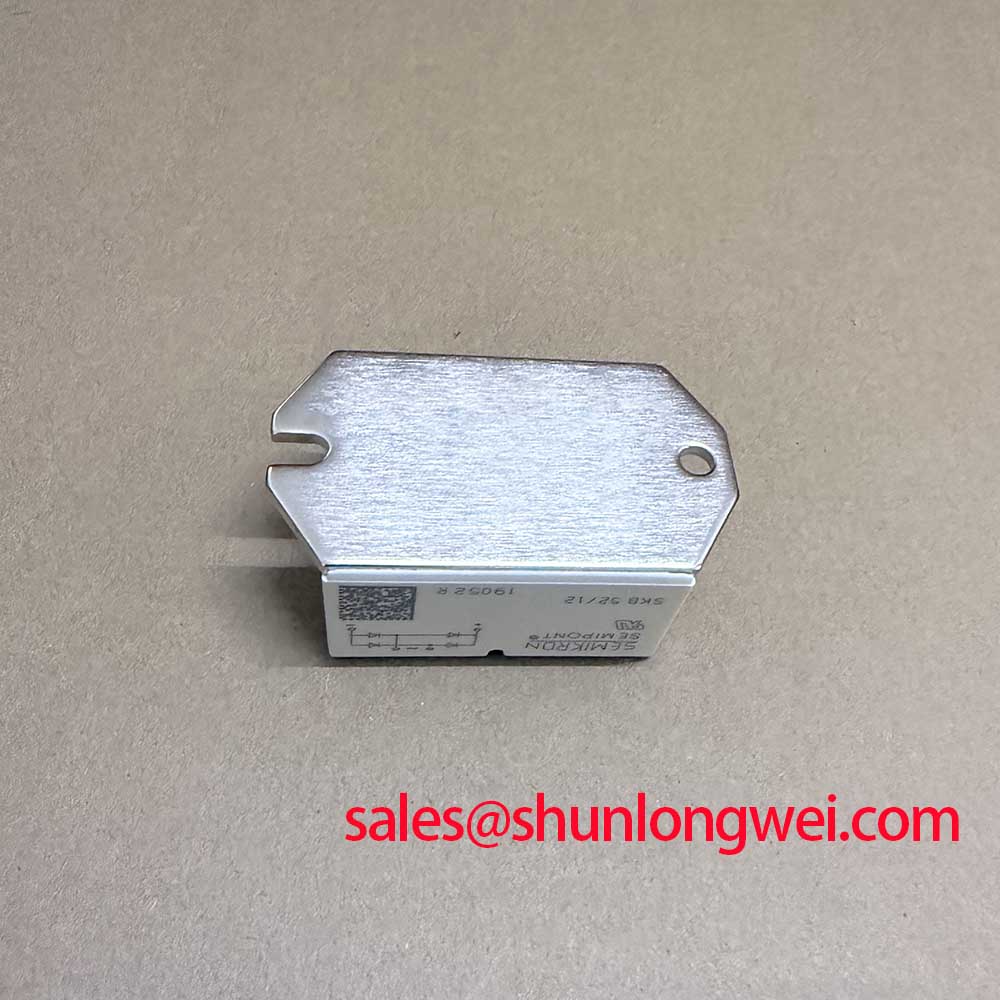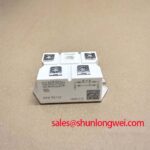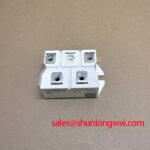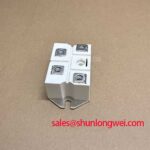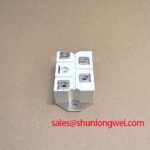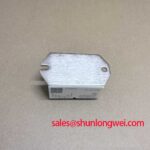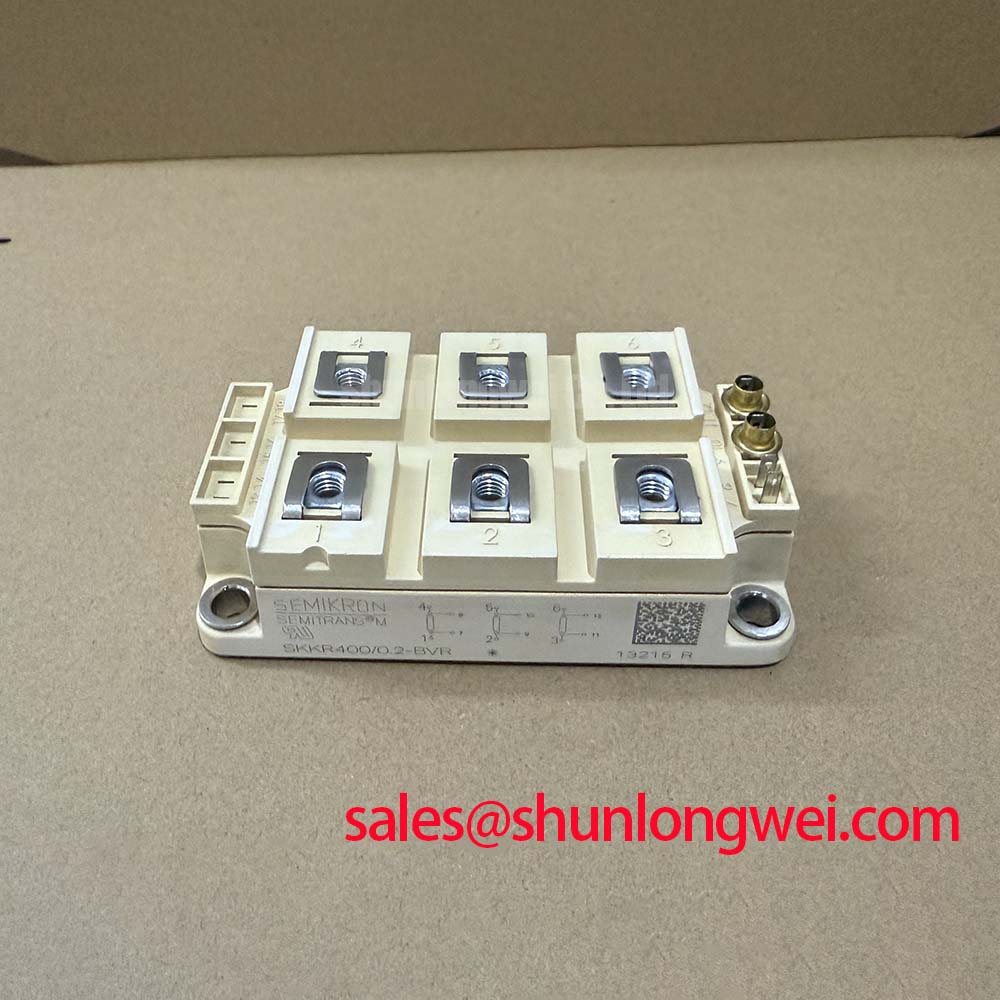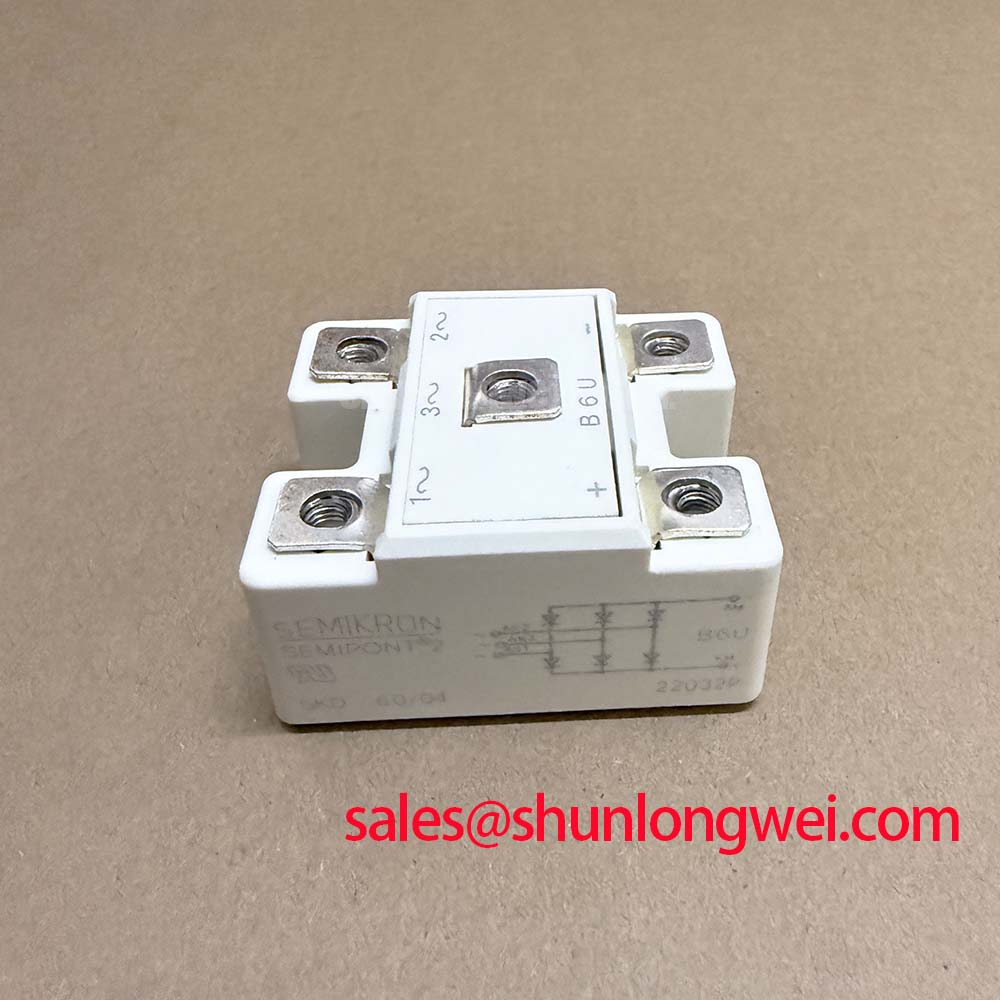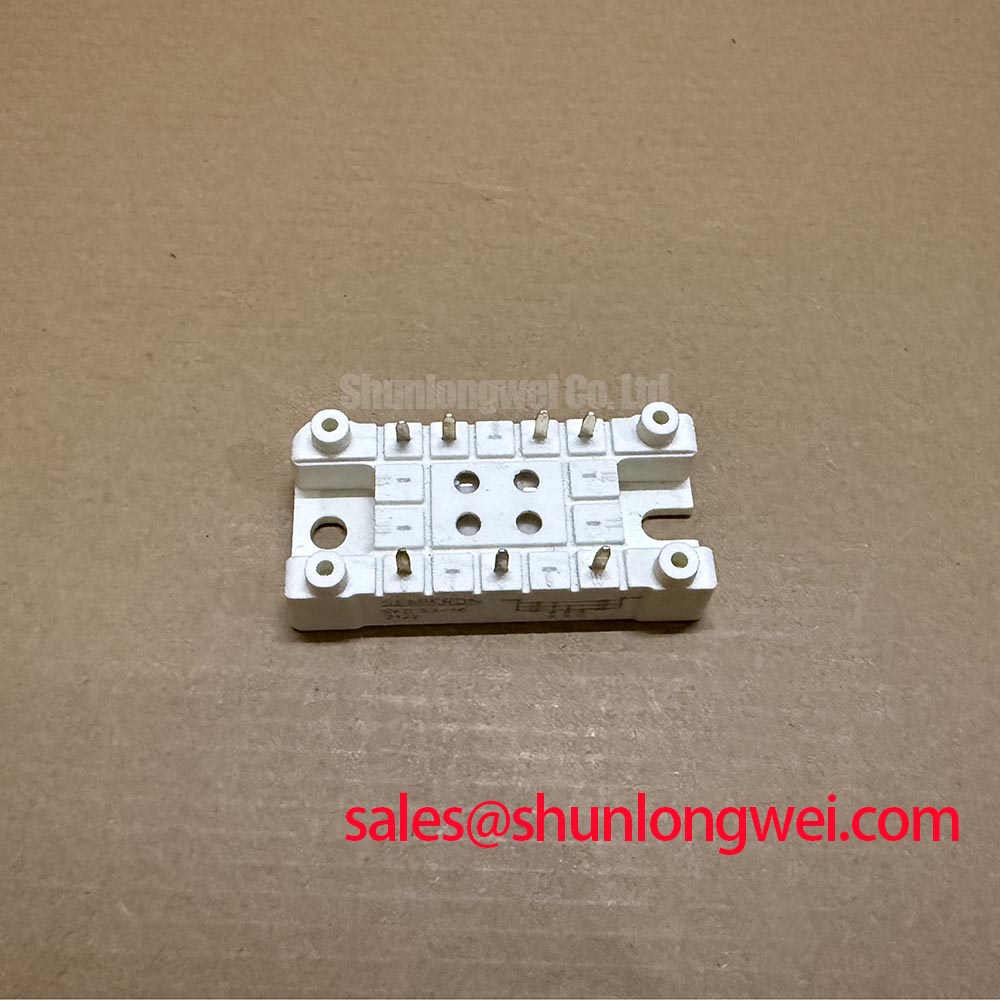Content last revised on November 14, 2025
SKB 52/12 Rectifier Bridge: Datasheet & Thermal Analysis
Engineered for superior thermal performance and long-term operational reliability through its robust, isolated metal case design. The SEMIKRON SKB 52/12 Power Bridge Rectifier delivers a dependable AC-to-DC conversion solution for demanding industrial environments. Its core design principle centers on efficient heat dissipation, directly addressing the common engineering challenge of maintaining component longevity under continuous load. By integrating an electrically isolated baseplate, it simplifies thermal management and reduces assembly complexity.
Top Specs: 1200V | 50A (@ Tc=80°C) | Rth(j-c) 1.05 K/W
Key Benefits: Simplified heatsink mounting. Enhanced operational lifespan.
A Closer Look at the Thermal-Centric Construction
The operational longevity of any power rectifier is intrinsically linked to its ability to manage heat. The SEMIKRON SKB 52/12 is built around this principle. Its primary structural feature is a metal case that is electrically isolated from the internal semiconductor junctions. This construction serves a dual purpose. Firstly, it provides a direct, low-resistance path for thermal energy to be transferred from the diode chips to an external heatsink. Secondly, the built-in isolation eliminates the need for additional, thermally-insulating pads which can often compromise heat transfer efficiency and add assembly steps. What is the key to its reliability? Its isolated metal case and glass-passivated diode chips work in tandem to provide both thermal and electrical stability.
Inside the module, glass-passivated diode chips form the core of the single-phase bridge. This passivation process seals the sensitive p-n junction from ambient humidity and contaminants, a critical factor in preventing performance degradation and premature failure over many years of service. This meticulous construction contributes to the component's stable reverse voltage characteristics and its ability to withstand the rigors of industrial settings.
Technical Inquiries for the SKB 52/12 Rectifier
- What is the significance of the I²t rating for the SKB 52/12?The I²t value, specified as 1700 A²s for a 10 ms duration, represents the thermal energy withstand capability of the device during a non-repetitive fault condition, like an inrush current surge. A higher value indicates greater robustness, ensuring the rectifier can survive brief, high-energy events without failing, which is a crucial aspect for designing resilient power supplies.
- How should the SKB 52/12 be mounted for optimal thermal performance?For best results, the module's metal baseplate should be mounted to a flat, clean heatsink surface using a thin layer of thermal compound. The datasheet specifies a mounting torque of 2 Nm (18 lb-in) for the fixing screw (M5), which is essential to ensure proper pressure for minimal thermal contact resistance without inducing mechanical stress on the case.
- Is the isolated case sufficient for all mounting applications?The case is isolated to 2500V (V_ISOL), which is suitable for most industrial applications. This allows direct mounting to a grounded chassis or heatsink. However, system-level insulation requirements and local safety regulations should always be reviewed to confirm compliance.
- What is the forward voltage drop (V_F) at the rated current?According to the datasheet, the maximum forward voltage per diode is 1.45V at a junction temperature of 25°C and a forward current of 60A. This parameter is critical for calculating conduction losses and, consequently, the total heat generated by the module during operation. Understanding this is a key step in any robust datasheet analysis.
Where Thermal Resilience Drives Performance
The robust thermal design of the SKB 52/12 makes it a strong candidate for applications where consistent performance and long service life are critical. Where does the SKB 52/12 excel? In applications demanding high thermal stability and simple heatsink integration. Its capabilities are particularly valuable in uncontrolled rectifying stages of industrial equipment.
Primary Application Arenas:
- Industrial Power Supplies: Serving as the front-end rectifier in linear and switch-mode power supplies that power automation controls, PLC systems, and factory equipment.
- Battery Charging Systems: Providing reliable AC-to-DC conversion for industrial battery chargers used in forklifts, backup power systems, and utility vehicles.
- Motor Drive Front-Ends: Used in the input stage of small to medium-sized Variable Frequency Drives (VFDs) and DC motor controllers, where it must handle line frequency AC input reliably.
For non-controlled rectifying stages up to 50A, the SKB 52/12's 1.05 K/W thermal resistance offers a superior choice where long-term thermal stability is paramount. For applications with lower current requirements, the related SKB 25/12 offers similar construction in a 25A package.
Deployment Focus: Powering Industrial Controls
In a typical deployment within a control cabinet power supply, the SKB 52/12's single M5 center mounting hole allows for quick and secure fastening to a shared heat sink or the cabinet's metal chassis, minimizing assembly time. Its screw terminals facilitate secure and serviceable connections for both the AC input and DC output lines.
SKB 52/12 Core Performance Metrics
The following parameters are fundamental to the integration of the SKB 52/12 into a power system design. These metrics have been extracted directly from the official manufacturer's datasheet for engineering evaluation.
| Parameter | Value |
|---|---|
| Repetitive Peak Reverse Voltage (V_RRM) | 1200 V |
| DC Output Current (I_d) | 50 A (at T_c = 80 °C) |
| Surge Forward Current (I_FSM) | 500 A (10 ms, T_j = 25 °C) |
| Thermal Resistance, Junction to Case (R_th(j-c)) | max. 1.05 K/W |
| I²t Value | 1700 A²s (10 ms, T_j = 25 °C) |
| Isolation Test Voltage (V_ISOL) | 2500 V (a.c.; 1 s) |
Interpreting Key Specifications
- DC Output Current (I_d): This value is highly dependent on the case temperature (Tc). The 50A rating is specified at a case temperature of 80°C, highlighting the importance of effective heatsinking. As the case temperature rises, the maximum permissible output current must be derated to keep the junction temperature within its safe operating limit of 150°C.
- Thermal Resistance (R_th(j-c)): This parameter is a direct measure of how efficiently heat can be removed from the semiconductor junction to the module's case. Think of thermal resistance like the narrowness of a pipeline for heat. The SKB 52/12's low 1.05 K/W value signifies a "wide pipe," enabling rapid heat transfer and contributing to lower operating temperatures and improved reliability. This is a critical factor in preventing thermal-related failures.
Strategic Value in High-Reliability Systems
In the context of industrial automation and power infrastructure, component selection extends beyond immediate performance to total cost of ownership (TCO). The design philosophy of the SKB 52/12, with its emphasis on thermal efficiency and mechanical simplicity, aligns directly with the strategic goal of maximizing system uptime and minimizing maintenance. The use of proven technologies like glass-passivated chips from a reputable manufacturer like Semikron Danfoss provides a level of design assurance that is critical for equipment intended for long-duration, continuous operation.
Data for Your Rectifier Evaluation
When evaluating rectifier solutions, it is crucial to compare key performance indicators that impact both electrical efficiency and mechanical integration. The SKB 52/12 presents a specific profile tailored for reliability and thermal management.
- Voltage Headroom: Its 1200V V_RRM rating provides a significant safety margin for operation on 400V/480V AC lines, accommodating line swells and transients.
- Thermal Interface: The direct metal case-to-heatsink interface offers a more predictable and often superior thermal path compared to isolated plastic-package rectifiers that require separate insulating hardware.
By focusing on a robust thermal architecture and proven internal components, the SKB 52/12 provides a foundational block for building power conversion systems where long-term, stable operation is not just a feature, but a core design requirement. This strategic approach to component engineering supports the development of more resilient and cost-effective industrial machinery.

